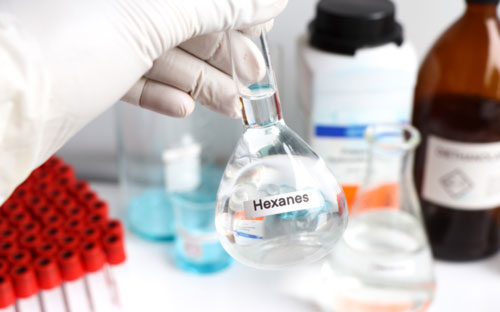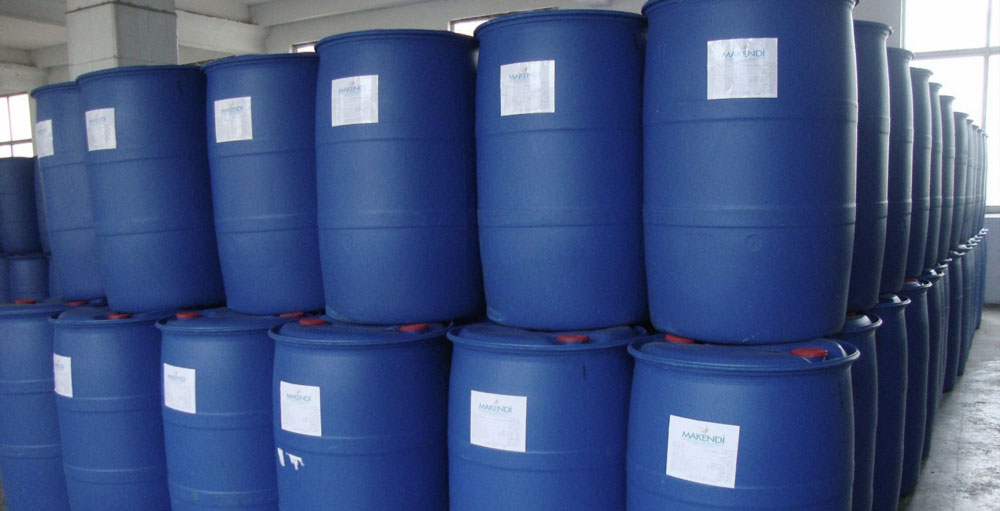Hexane – CAS#: 110-54-3
Bulk Order
Normal hexane is primarily used as a solvent in various industrial applications, including oil extraction, pharmaceutical manufacturing, and the production of rubber and plastics. It is also used as a reference substance for gas chromatography analysis, a technique used to separate and analyze the different components of a sample.
Normal hexane is a hydrocarbon compound with the chemical formula C6H14. It is a colorless liquid with a characteristic odor similar to that of gasoline. Normal hexane is one of the isomers of the hexane family, which also includes other isomers such as iso-hexane and neo-hexane.
ISO 9001, ISO 14001, ISO 13485, and ISO 45001
| Appearance | Colorless |
| Color saybolt | +30 |
| Sp. Gr(60F/60F) | 0.662 |
| n-Hexane | 99.8% |
| Benzene | <3 |
| Color say bolt | 65.5 |
| Dry Distillation Point EP | 69.5 |
| Sulfur | <1 |
| Bromine Index | <5 |
| Nonvolatile Matter | None detected |
| Water Content | 50 |
| Total C6 Hidrocarbons C6 | 93% |
| Sum of C7+ Hidrocarbons | 7% |
| Sum of C5– Hidrocarbons | 0 |
| Total Aromatics Amount | ≤30 ppm |
| Carbonyl Groups | ≤10 ppm |
| Peroxides | 0 |
| Non-volatiles Residue | ≤1mg/100ml |
What is the Hexane?
Normal-hexane is a hydrocarbon compound with the chemical formula C6H14. It is a colorless liquid with a characteristic odor similar to that of gasoline. Normal-hexane is one of the isomers of the hexane family, which also includes other isomers such as iso-hexane and neo-hexane.
Normal-hexane is primarily used as a solvent in various industrial applications, including oil extraction, pharmaceutical manufacturing, and the production of rubber and plastics. It is also used as a reference substance for gas chromatography analysis, a technique used to separate and analyze the different components of a sample. It has a relatively low boiling point of around 69°C (156°F) and is highly volatile, meaning it can evaporate quickly at room temperature. It is also highly flammable and potentially hazardous, and proper safety precautions should be taken when handling and storing it.
In addition to its use as a solvent, is also used as a fuel for internal combustion engines, particularly in laboratory settings. However, its use as a fuel is becoming less common due to concerns over its potential environmental and health impacts.
What Hexane Used For?
n-Hexane is commonly utilized as a solvent in hydrocarbon polymerization; for chemical extraction in edible oil production; as essential oil thinner; detergent for precise instruments (Freon substitution). Also can be used to produce binder, paint, coating, and off-set oil.
Hexane is used to extract oil from seeds and grains, such as soybeans, corn, and peanuts, which are used to make cooking oil, margarine, and other food products.
Is used to remove fats, oils, and other contaminants from animal hides before they are tanned and processed into leather.
Hexane is used as a solvent in the production of paints, varnishes, and other coatings.
Hexane is used to dissolve and remove fats, oils, and other contaminants from rubber and plastic before they are processed and molded.
Hexane Industry Used
This substance is used in the production of the following materials:
- Food processing
- Pharmaceutical manufacturing
- Rubber and plastic production
- Textile manufacturing
- Paint and coatings manufacturing
- Adhesives and sealants manufacturing
- Leather tanning
- Oil and gas extraction
- Printing industry
Hexane Safety Procedures
Hexane can be hazardous to human health and the environment if not handled and disposed of properly. Here are some safety warnings for hexane:
- Hexane is highly flammable and can ignite at low temperatures. It should be stored and handled away from ignition sources, such as open flames and sparks.
- Hexane can be toxic if inhaled or ingested and can cause skin and eye irritation. Proper personal protective equipment (PPE) should be worn when handling hexane, including gloves, safety glasses, and protective clothing.
- Hexane can contaminate soil and groundwater if not properly disposed of. Proper disposal methods should be followed by local regulations.
- Hexane should be stored in a cool, dry place, away from direct sunlight and heat sources. It should be kept in a tightly closed container and away from incompatible materials, such as oxidizing agents and strong acids.
- Workers who handle hexane should be properly trained in its safe use, handling, and disposal.
- Exposure to hexane in the workplace should be minimized through the use of proper engineering controls, such as ventilation systems and containment measures.


